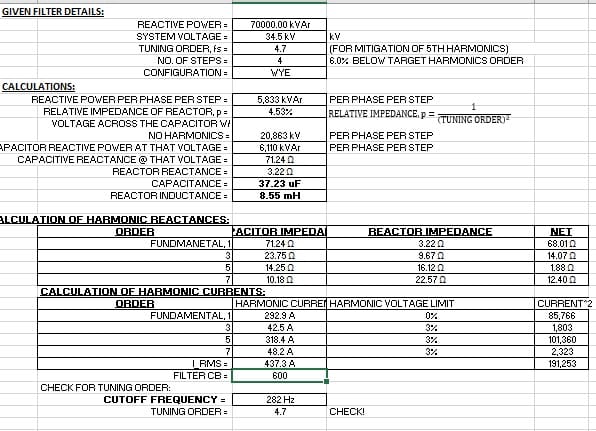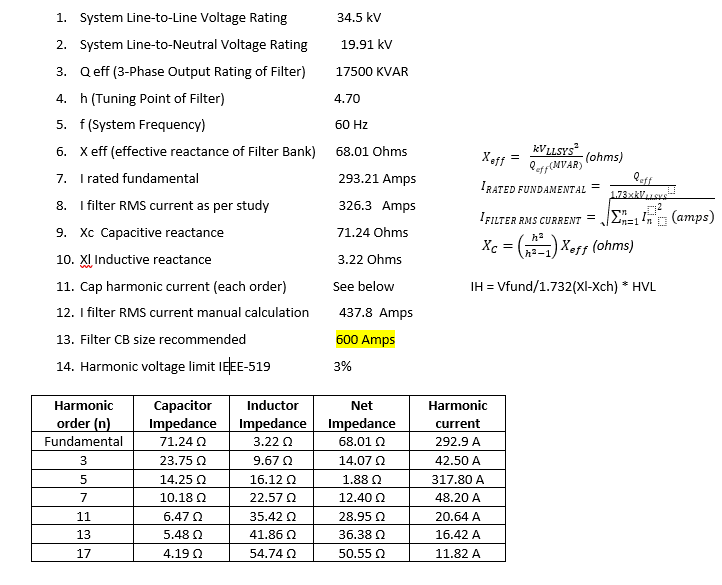adi 3291
Electrical
- Mar 22, 2022
- 26
I am going through some of the NEPSI webinars and online resources, it was very helpful content on the harmonic filter and capacitor banks. Thank you for the resources.
Our wind turbines experienced an abnormal amount of turbine faults and after investigating we identified that the faults were caused by high levels of harmonics while the capacitor banks were in service. After harmonic study analysis, identified resonant point at or near 5th harmonics and have high individual harmonic distortions at the 5th, 7th, and/or 11th harmonics. So sized and installed a single tuned bandpass filter tuned to the 5th harmonic on one of our capacitor banks. See attached for reference. Each capacitor bank is 17.5MVAR, rated @34.5KV and we have 4 of them on each bus.
After installing the filter also, we frequently saw blown fuses on capacitor banks. So what is the methodology to calculate an additional increase in current due to harmonics other than 5th in these capacitor banks, so we can size the fuses and disconnect switches correctly?
Each capacitor bank is 17.5MVAR, rated @34.5KV and we have 4 of them on each bus.
Our wind turbines experienced an abnormal amount of turbine faults and after investigating we identified that the faults were caused by high levels of harmonics while the capacitor banks were in service. After harmonic study analysis, identified resonant point at or near 5th harmonics and have high individual harmonic distortions at the 5th, 7th, and/or 11th harmonics. So sized and installed a single tuned bandpass filter tuned to the 5th harmonic on one of our capacitor banks. See attached for reference. Each capacitor bank is 17.5MVAR, rated @34.5KV and we have 4 of them on each bus.
After installing the filter also, we frequently saw blown fuses on capacitor banks. So what is the methodology to calculate an additional increase in current due to harmonics other than 5th in these capacitor banks, so we can size the fuses and disconnect switches correctly?
Each capacitor bank is 17.5MVAR, rated @34.5KV and we have 4 of them on each bus.


